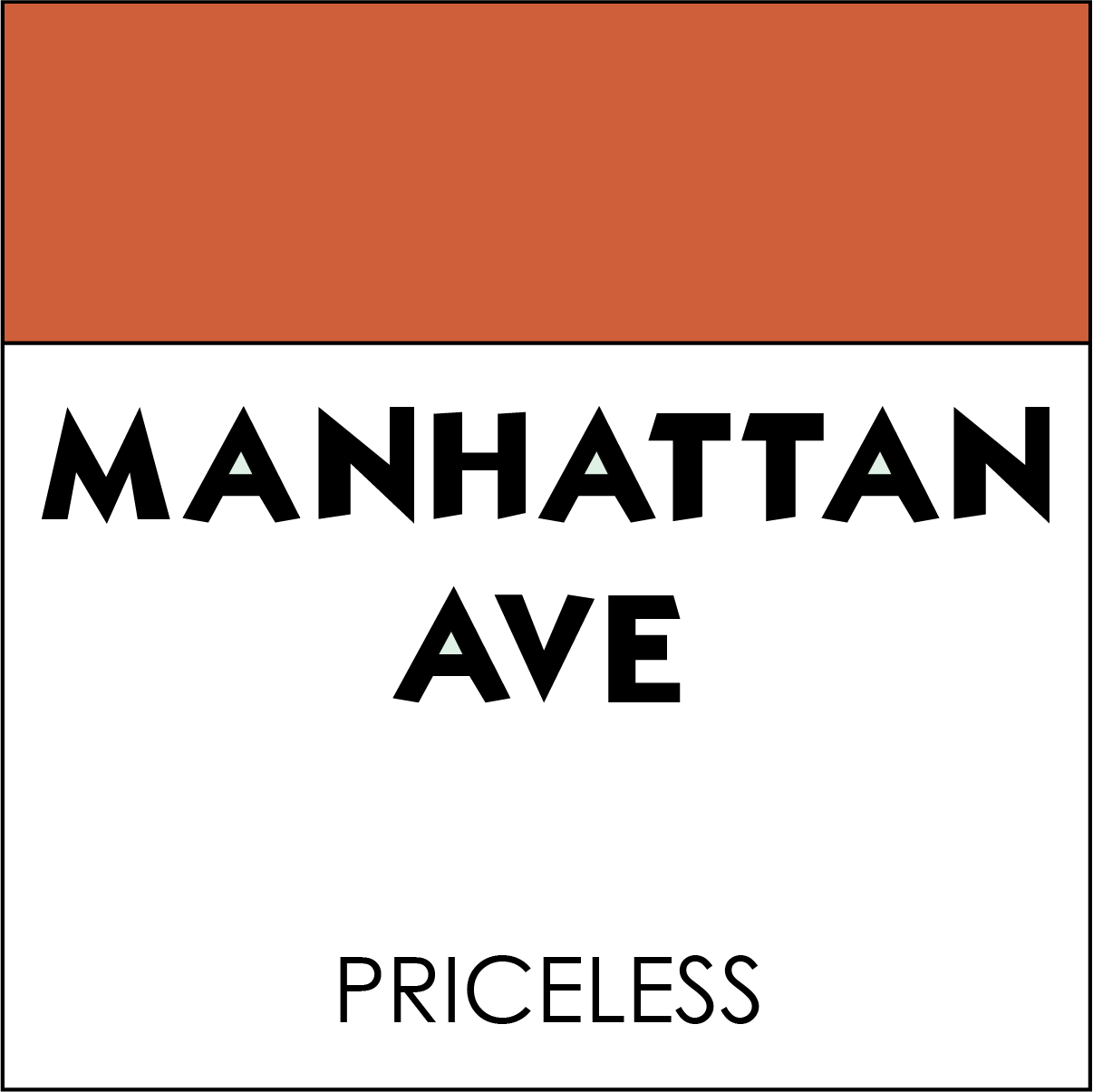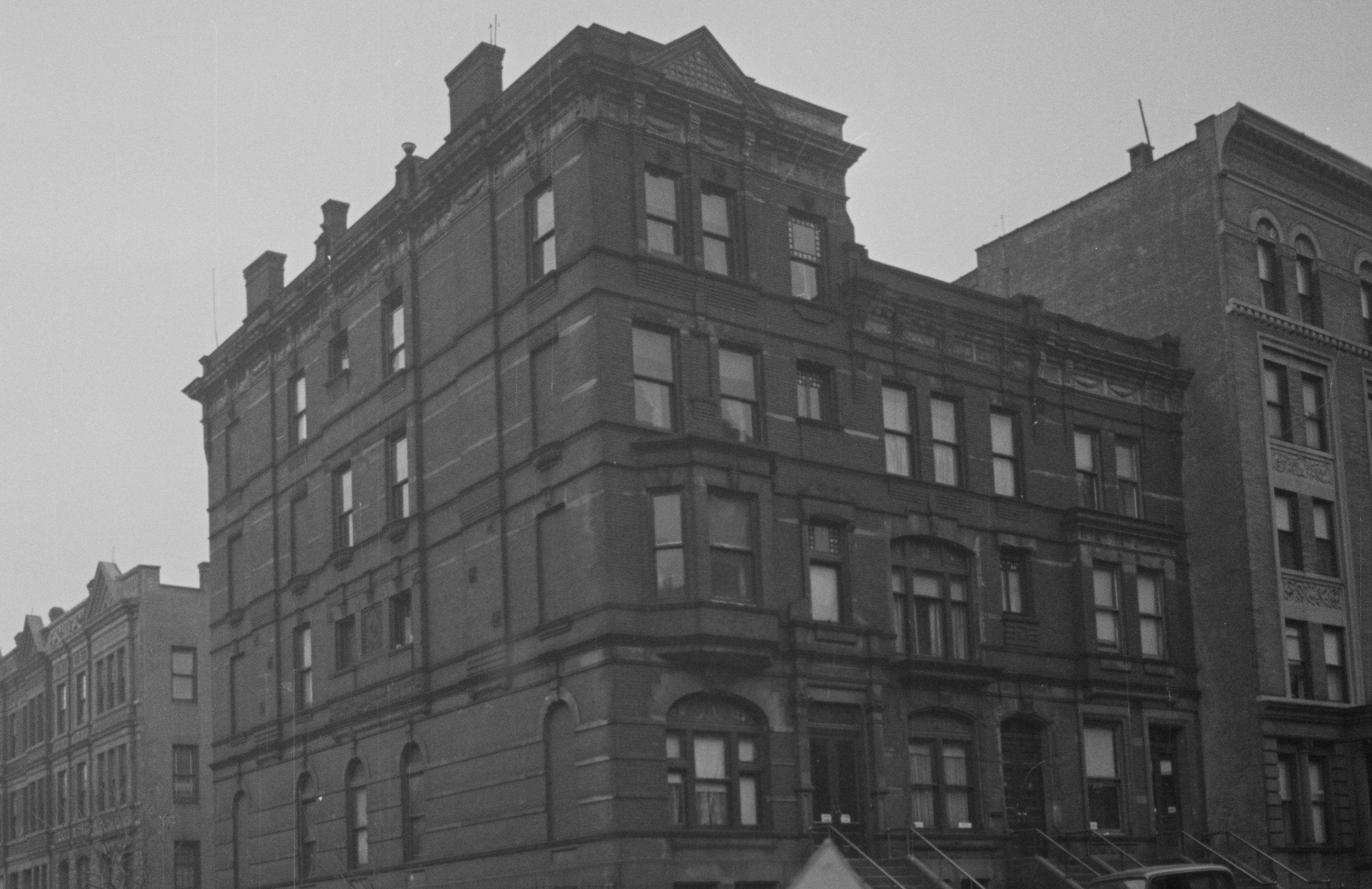
50 West 104th St.
by Tom Miller
William and Jeanette Hilgers were a real estate development team in the 1890s. William Hilgers was a builder, and his wife took care of the business end of the partnership. In 1893 they purchased the four-story brick house at 50 West 104th Street. Built in 1886, it now housed Miss Emily A. Ward’s Riverside School. Miss Ward would quickly have to find a new location for her facility. That year, the Hilgers demolished the house and hired architect M. V. B. Ferdon to design a flat (or apartment) building on the site.
His plans called for a “five story brick and stone flat” to cost $20,000 (about $719,000 in 2025 money). Completed that year, it was faced in red brick and trimmed in brownstone. Ferdon’s Queen Anne design included colorful stained-glass transoms, a faceted oriel at the second floor, and a triangular pediment and brick parapet above the bracketed cornice.
Among the initial residents were John Moonan and his wife, the former Margaret Dunn. The couple had two daughters, Anna and Catherine. Born in Lobinstown, Meath, Ireland in 1847, Moonan was a member of the Society of the Friendly Sons of St. Patrick. Tragically, just months after moving in, Margaret Moonan died at the age of 38 on January 18, 1894. Her funeral was held in the Church of the Holy Name on Amsterdam Avenue and 96th Street.
The prisoners were held at $500 bail each—more than $19,000 each in today’s money.
John Moonan seems to have occasionally moved among shady characters. In the winter of 1899, Police Captain Killilen initiated a “crusade against the bucket shops which infest New street,” according to The Sun. (Bucket shops were illegal gambling operations that took bets on the rise and fall of stocks.) On January 19, 1900, The Sun reported on Killilen’s raid in the Public Stock and Grain Exchange office at 51-53 New Street. It resulted in four arrests, including Carrie Jones, the “typewriter,” or secretary.
The article said that Carrie Jones was, in fact, Carrie Phillips, “who has been arrested before in bucket-shop raids.” The prisoners were held at $500 bail each—more than $19,000 each in today’s money. The Sun said, “Bail was furnished by John Noonan [sic] of 50 West 104th street.”
Catherine Moonan was married to Frank T. Fitzgerald in the Church of the Ascension on West 107th Street on October 30, 1909. John and Anna Moonan continued to share the apartment for a decade. Then, on January 7, 1919, Anna died. Her funeral was held in the apartment, followed by a solemn requiem mass where her sister had been married.
Among John Moonan’s neighbors in the building were the Galloway family. In 1920 their son, Gerald E. Galloway received a prestigious honor. On January 15, the Washington Bureau of the New-York Tribune reported, “Six members of the New York National Guard and seven men from civil life living in New York to-day were designated by the War Department to take the entrance examination…for admission to the Army Military Academy at West Point.” Among those appointed from “civil life” was Gerald E. Galloway. A year later, on April 28, 1921, the newspaper reported that Galloway had qualified for admission.
John Moonan remained at 50 West 104th Street until his death at 78 on August 9, 1925. As had been the case with Anna, his funeral was held in the apartment followed by a mass at the Church of the Ascension.
Between 1952 and 1965, the Frederick Douglass Houses were erected on the site.
Within two years, the building was converted to rented rooms. An advertisement in the Columbia Spectator on March 22, 1927 offered, “For Rent—Desirable rooms, single and double; running water, adjacent baths, 50 West 104th Street and Manhattan Ave.”
Then, on December 13, 1934, The New York Times reported that Katherine Fitzgerald had leased the building to the Spanish Serenisima Grand Masonic Lodge. “The house will be used by the organization for its general headquarters,” said the article.” The lodge occupied the building for about two decades, until a massive urban renewal project swept away all the buildings within a 22.5-acre swatch. Between 1952 and 1965, the Frederick Douglass Houses were erected on the site.
Tom Miller is a social historian and blogger at daytoninmanhattan.blogspot.com


